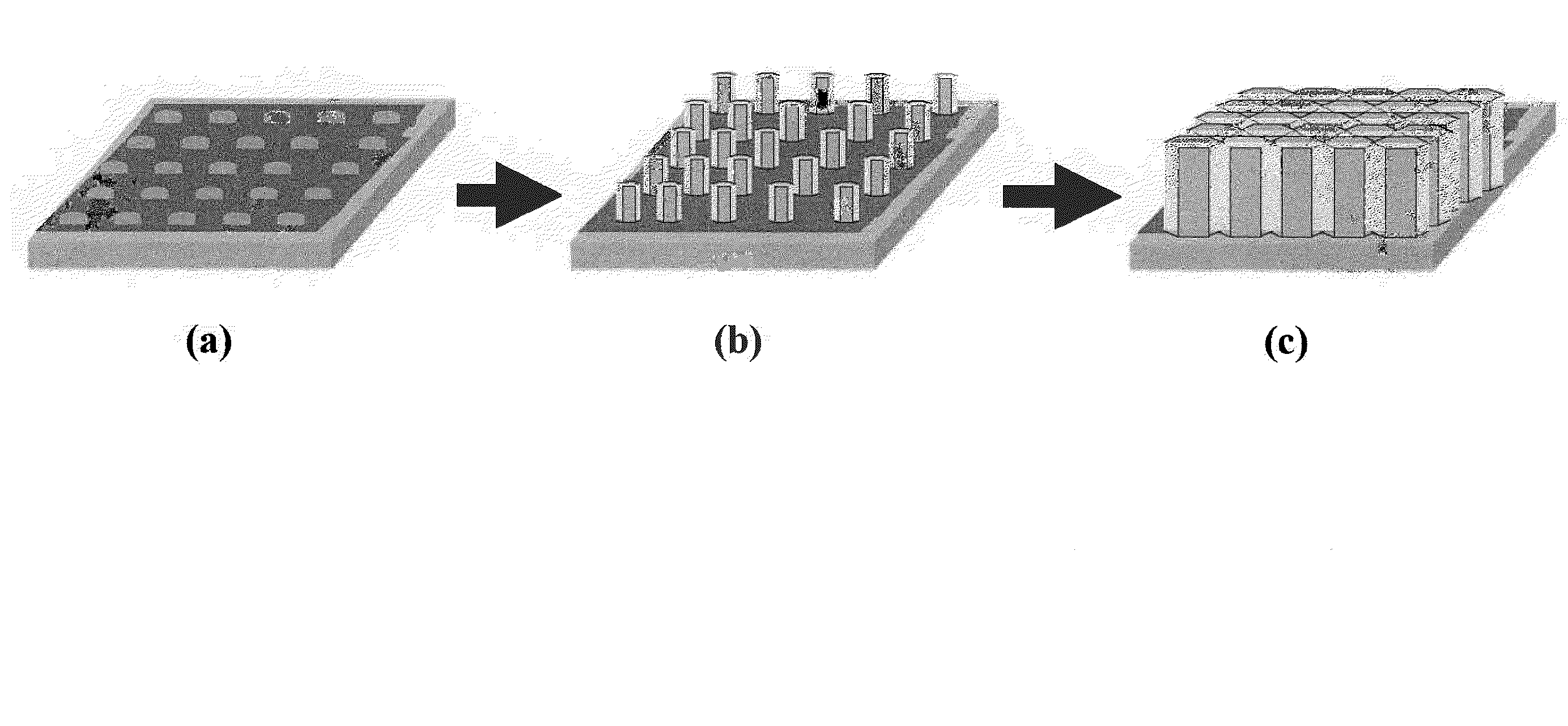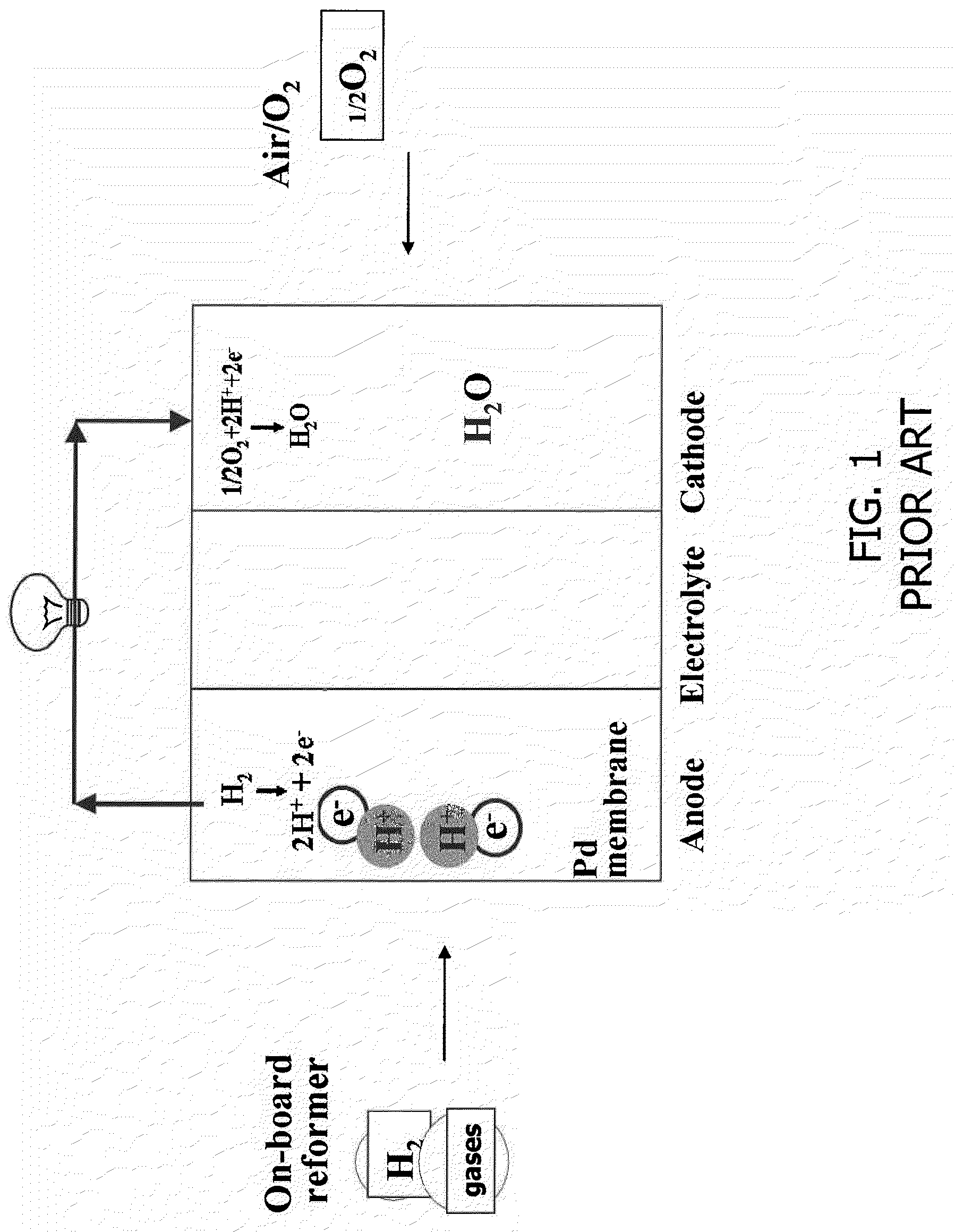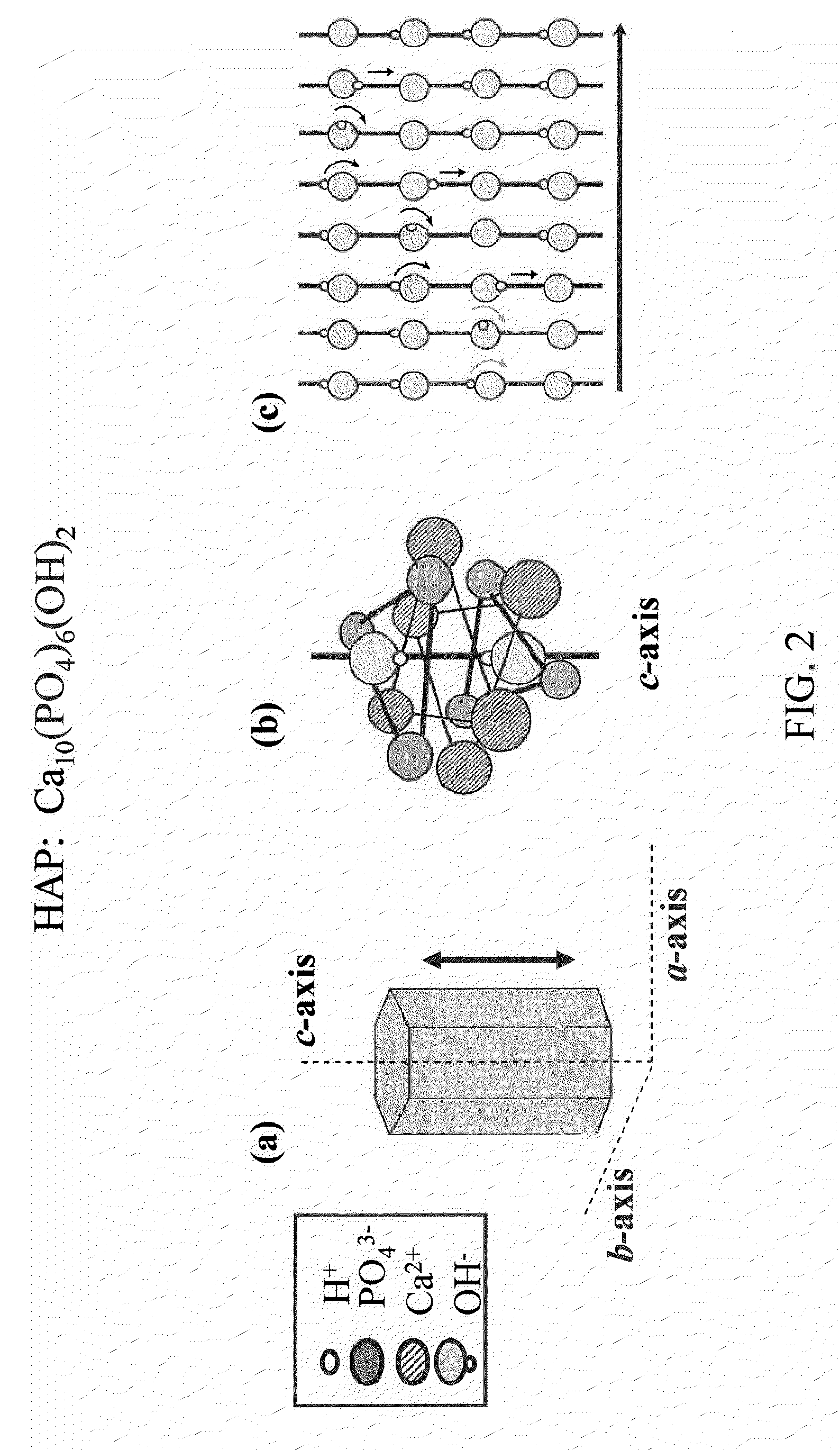Ion-/proton-conducting apparatus and method
a proton-conducting membrane and apparatus technology, applied in the direction of superimposed coating process, phosphorus oxyacids, electrochemical generators, etc., can solve the problems of device failure, too fragile thin ceramic membranes to be self-supporting, and expensive platinum catalysts to be used for fuel cell oxidation and reduction reactions, etc., to achieve good performance and facilitate ion/proton transport
- Summary
- Abstract
- Description
- Claims
- Application Information
AI Technical Summary
Benefits of technology
Problems solved by technology
Method used
Image
Examples
Embodiment Construction
[0038]As mentioned above, optimal performance of a hydroxyapatite ion- / proton-conducting membrane occurs when the crystal domains span the entire thickness of the membrane to eliminate grain boundary resistance across the thickness of the membrane. In addition, the crystal's c-axis would be aligned so that the proton transport path is optimized, as illustrated in FIGS. 2(a-c).
[0039]FIG. 3(a) schematically shows HAP crystals that are randomly oriented. FIG. 3(b), on the other hand, schematically shows an ideal HAP membrane structure with the c-axes of crystal domains spanning the entire membrane thickness to optimize proton transport;
[0040]A non-limiting, exemplary ion / proton conducting membrane 400-1 as illustrated in FIG. 4(c) includes a substrate 402 and a crystalline ion-conducting thin film 304 (also shown in FIG. 3(b)) having a thickness t. The thin film is characterized by a plurality of single apatite crystals 304′ each having its c-axis oriented normal to the substrate (as a...
PUM
| Property | Measurement | Unit |
|---|---|---|
| temperature | aaaaa | aaaaa |
| proton conductivity | aaaaa | aaaaa |
| thickness | aaaaa | aaaaa |
Abstract
Description
Claims
Application Information
 Login to View More
Login to View More - R&D
- Intellectual Property
- Life Sciences
- Materials
- Tech Scout
- Unparalleled Data Quality
- Higher Quality Content
- 60% Fewer Hallucinations
Browse by: Latest US Patents, China's latest patents, Technical Efficacy Thesaurus, Application Domain, Technology Topic, Popular Technical Reports.
© 2025 PatSnap. All rights reserved.Legal|Privacy policy|Modern Slavery Act Transparency Statement|Sitemap|About US| Contact US: help@patsnap.com



